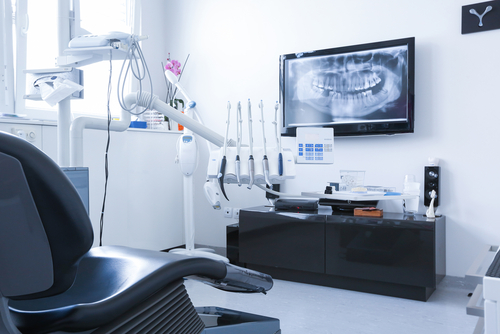Have you ever wondered what might happen if your dental equipment breaks unexpectedly? There is a really helpful option on your TripleGuard™ Insurance, called 'equipment breakdown insurance'. Here's what it is, and why you may want to consider this option as a part of your policy.
What is the equipment breakdown option?
You could incur costs when your dental practice equipment accidentally breaks down, even if that equipment is under warranty. Your equipment warranty may cover the cost of the repair, but will not cover lost income while the equipment, such as an X-ray machine, is out of commission—this is where the equipment breakdown option comes into play.
The Equipment Breakdown Option, protects against the sudden and accidental breakdown of mechanical or electrical equipment located on the premises of your dental practice, such as patient chairs, X-ray equipment, photocopiers and compressors.
Why consider the TripleGuard Insurance Equipment Breakdown Option?
 The option pays for the repair or replacement of damaged equipment (subject to a $1,000 deductible) and reimburses you if the breakdown results in a loss of income. You are compensated for your income loss after the first eight hours during which your business normally would have operated.
The option pays for the repair or replacement of damaged equipment (subject to a $1,000 deductible) and reimburses you if the breakdown results in a loss of income. You are compensated for your income loss after the first eight hours during which your business normally would have operated.
Available for a small additional annual premium, the option includes coverage for loss or damage occurring to electrical equipment as a result of short circuit, blow-out or other equipment damage. It also includes coverage for loss or damage to equipment, manufacture or installation of that equipment.
The sudden and accidental breakdown of equipment must result in physical damage requiring repair or replacement of the equipment or part of it. Prior to breakdown, your equipment must have received regular inspection and maintenance in compliance with the manufacturer's recommendations.
Recommendations to Help Prevent Equipment Breakdown
Heating, Ventilation, Air Conditioning, Plumbing and Electrical Systems
If you own your building, have its boiler, heating, ventilation, air conditioning, plumbing and electrical systems inspected regularly by qualified personnel. If you lease your premises, you may be responsible for the air conditioning and heating systems, as well as some plumbing, depending on the terms of your lease.
Electrical Systems
The top two causes of electrical systems failure are loose connections and exposure to moisture. Have qualified personnel conduct regular inspections of your office's equipment and, if applicable, your building's electrical system, and perform preventative maintenance. According to the Institute of Electrical and Electronics Engineers, electrical components that do not undergo regular preventative inspection and maintenance are three times more likely to fail than those that were inspected on a regular basis.
Power Surges
Your practice's computers aren't the only equipment vulnerable to a sudden spike in voltage. Anything with a microchip in it can be damaged by a rise or fall in power output. Ensure that all equipment is plugged into power bars equipped with surge suppressors and is properly grounded. Lightning strikes are responsible for only one-third of power surges; most power surges originate from the building's own electrical systems (see above). If you are not sure about any of this, consult a licensed electrician or electrical engineer.
Inside Your Practice
Regularly inspect all equipment in your practice, as described by the manufacturer's warranty. Pay special attention to plastic and rubber water hoses leading from your equipment. Over time, these will degrade and may lead to problems such as leakage, corrosion and slip-and-falls. Also check any power cords and exterior wiring around the equipment. If necessary, consider a service contract.
The equipment breakdown option is available option under TripleGuard Insurance policies.
TripleGuard™ Insurance is underwritten by Zurich Insurance Company Ltd.
The information contained here is a summary only. A full description of coverage and eligibility, including exclusions, restrictions and limitations can be found in the Policy Terms and Conditions governing each plan.